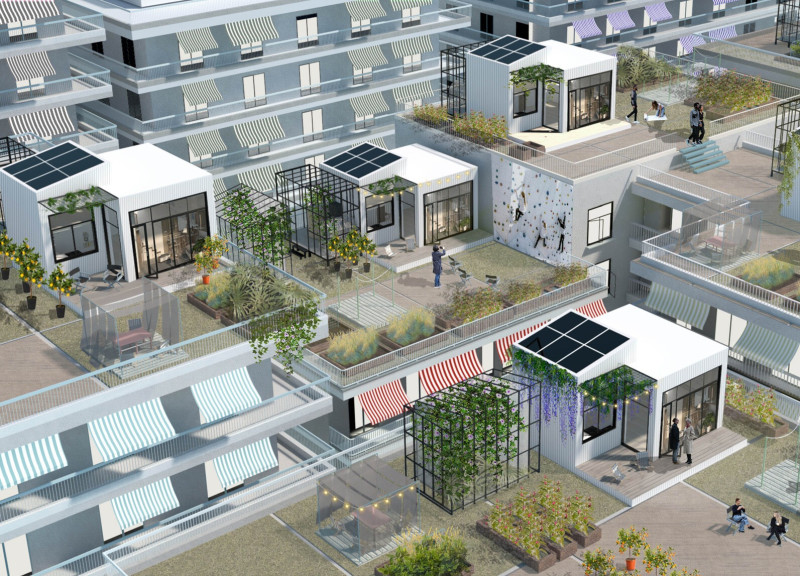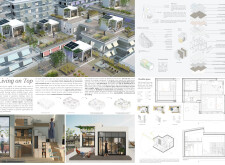5 key facts about this project
The primary function of "Living on Top" is to provide safe, affordable, and sustainable living spaces for residents, particularly targeting young professionals and individuals seeking community-oriented housing solutions. Each micro-home is meticulously designed with modular units that emphasize flexibility and adaptability, allowing inhabitants to tailor their living spaces to personal preferences and lifestyle changes. This functional approach not only optimizes the use of limited square footage but also enhances the overall utility of the micro-homes.
Key components of the project include a cohesive integration of shared communal areas, which foster social interaction among residents. These spaces are designed to encourage a sense of community, creating an environment where neighbors can gather for activities or simply connect with one another. The communal features are complemented by individual units that use smart design strategies to maximize comfort within limited confines. Horizontal and vertical expansions within the living spaces, such as movable walls and multi-functional furniture, allow residents to alter their environments according to their changing needs.
The architectural approach of "Living on Top" is characterized by its commitment to sustainability. By incorporating green roofs and planters, the design enhances urban biodiversity while improving air quality. The use of eco-friendly materials, such as sustainable wood and eco-composites for cladding, further reflects the project’s dedication to integrating environmental responsibility within urban living. The inclusion of solar panels allows for an off-grid energy consumption model, empowering residents to decrease their reliance on traditional utility networks and embrace a more sustainable lifestyle.
In addition to the design's sustainability features, "Living on Top" places a strong emphasis on aesthetic harmony with the urban setting. The design blends seamlessly into the existing architectural fabric of Athens, creating a visual connection that respects and enhances the local environment. Attention to detail is evident in various elements, including the textures of materials used, which provide both tactile and visual interest while maintaining durability and functionality.
The unique attributes of "Living on Top" extend to its emphasis on community engagement. The project encourages residents to actively participate in governance and community activities, contributing to a broader sense of ownership and belonging. By integrating shared spaces that accommodate social events, workshops, and communal initiatives, the design cultivates an inclusive atmosphere that promotes collaboration and interaction.
The architectural ideas behind “Living on Top” respond not only to immediate housing needs but also set a precedent for future developments in urban areas facing similar challenges. The careful consideration of design elements, functionality, sustainability, and community engagement illustrates a holistic approach to architecture that prioritizes the welfare of residents and the environment.
For further insights into the project's architectural plans, sections, designs, and overall concept, we invite you to explore the project presentation. Engaging with these elements will provide a deeper understanding of how "Living on Top" effectively addresses contemporary urban living challenges through thoughtful architectural design.























